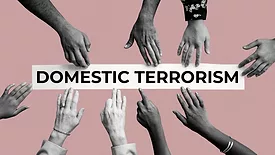Home » domestic terrorism
Articles Tagged with ''domestic terrorism''
Education & Training
Domestic terrorism poses a number of risks — both physical and cyber.
Read More
Top Web Exclusives
Top 12 physical security, cybersecurity & risk management stories of 2022
December 6, 2022
Mitigating domestic terrorism and insider threat risks
Understand the root causes of domestic extremism and the cultural landscape to prevent and mitigate insider threats.
May 20, 2022
Inside Security's April 2022 issue: Preparing global security operations centers for remote connectivity
Plus: De-escalation, access control, the metaverse, loss prevention, security jobs and much more.
April 25, 2022
Sign-up to receive top management & result-driven techniques in the industry.
Join over 20,000+ industry leaders who receive our premium content.
SIGN UP TODAY!Copyright ©2025. All Rights Reserved BNP Media.
Design, CMS, Hosting & Web Development :: ePublishing










